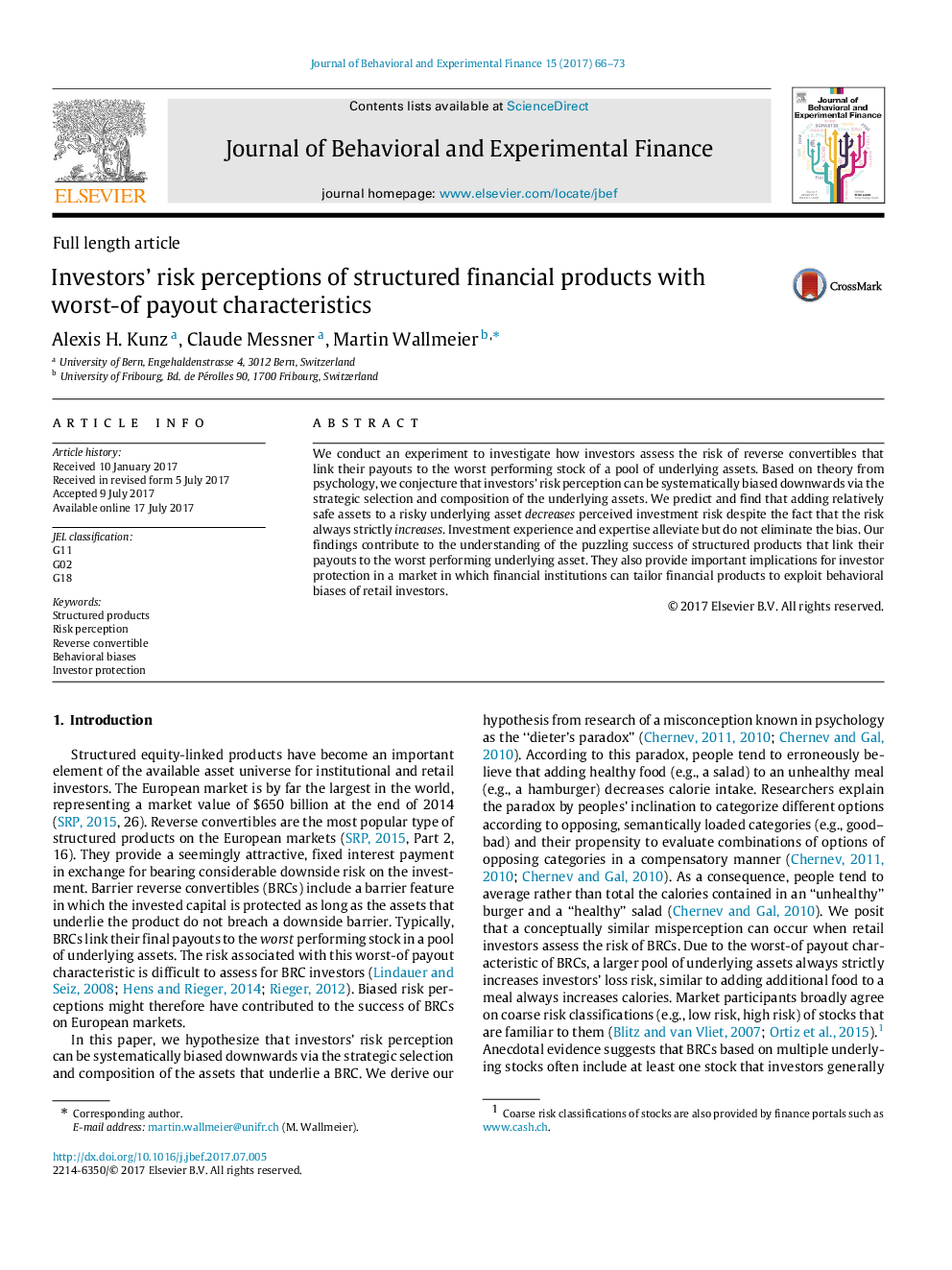| Article ID | Journal | Published Year | Pages | File Type |
|---|---|---|---|---|
| 5042440 | Journal of Behavioral and Experimental Finance | 2017 | 8 Pages |
We conduct an experiment to investigate how investors assess the risk of reverse convertibles that link their payouts to the worst performing stock of a pool of underlying assets. Based on theory from psychology, we conjecture that investors' risk perception can be systematically biased downwards via the strategic selection and composition of the underlying assets. We predict and find that adding relatively safe assets to a risky underlying asset decreases perceived investment risk despite the fact that the risk always strictly increases. Investment experience and expertise alleviate but do not eliminate the bias. Our findings contribute to the understanding of the puzzling success of structured products that link their payouts to the worst performing underlying asset. They also provide important implications for investor protection in a market in which financial institutions can tailor financial products to exploit behavioral biases of retail investors.
